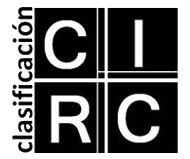Ciudades - barrio, no gueto, no villas miserias
DOI:
https://doi.org/10.24215/16696581e728Palabras clave:
Ciudades- barrio, marginalidad urbana, estado, gueto, villas miseriaResumen
Este trabajo aborda las diversas tramas bajo las que se envuelve la marginalidad social. Determinamos aquí las discrepancias entre Ciudades-Barrio, Villas Miseria y Gueto, a través del análisis comparativo de las tres formas de enclaves urbanos y sus caracterizaciones teóricas. Este elemento tiene carácter decisivo en el estudio de las Ciudades-Barrio, debido a que, pone en tensión múltiples denominaciones, algunas a nuestro entender erróneas, que pesan sobre estas barriadas. Abordamos las lógicas institucionales del Gueto y las Ciudades-Barrio son diferentes y diferenciales, estableciendo las discrepancias conceptuales entre Ciudades-Barrio, Villas Miseria y Gueto. Finalmente, analizamos la problemática a partir de la revisión de definiciones teóricas de estos sitios de relegación social: el anclaje legal de cada uno, la genealogía de la conformación de los Guetos, las Ciudades-Barrio y las Villas Miseria, la infraestructura de cada sitio e identidades que operan en el interior de una conformación social. Concluimos que existe una marcada la relación entre Estado e identidades sociales estigmatizadas.
Descargas
Citas
El contenido del presente artículo es un esfuerzo por distinguir las características estructurales de tres formas de organización social de espacio vivido: Ciudades-Barrio, villas miseria y gueto.
Descargas
Publicado
Cómo citar
Número
Sección
Licencia
La aceptación de un original por parte de la revista implica la cesión no exclusiva de los derechos patrimoniales de los/as autores/as en favor del editor, quien permite la reutilización, luego de su edición (postprint), bajo una Licencia Creative Commons Atribución-NoComercial-CompartirIgual 4.0 Internacional (CC BY-NC-SA 4.0)
Acorde a estos términos, el material se puede compartir (copiar y redistribuir en cualquier medio o formato) y adaptar (remezclar, transformar y crear a partir del material otra obra), siempre que a) se cite la autoría y la fuente original de su publicación (revista y URL de la obra), b) no se use para fines comerciales y c) se mantengan los mismos términos de la licencia.
La cesión de derechos no exclusivos implica que luego de su edición (postprint) en Question las/os autoras/es pueden publicar su trabajo en cualquier idioma, medio y formato; en tales casos, se solicita que se consigne que el material fue publicado originalmente en esta revista.
Tal cesión supone, también, la autorización de los/as autores/as para que el trabajo sea cosechado por SEDICI, el repositorio institucional de la Universidad Nacional de La Plata, y sea difundido en las bases de datos que el equipo editorial considere adecuadas para incrementar la visibilidad de la publicación y de sus autores/as.
Asimismo, la revista incentiva a las/os autoras/es para que luego de su publicación en Question depositen sus producciones en otros repositorios institucionales y temáticos, bajo el principio de que ofrecer a la sociedad la producción científica y académica sin restricciones contribuye a un mayor intercambio del conocimiento global.


















































